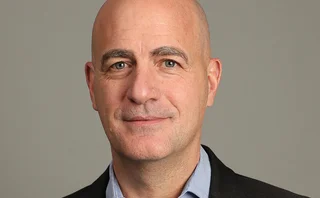
Paper of the Year: Hidden Markov Regimes in Operational Loss Data: Application to the Recent Financial Crisis
Research builds on earlier work to integrate business cycles into op risk models

Of all the flaws in the soon-to-be-defunct advanced measurement approach (AMA) to operational risk capital, the unpredictability of estimated capital requirements is perhaps its biggest fault. The AMA will be replaced by the Basel Committee’s new standardised measurement approach (SMA) in 2022 – also not free from controversy – but for the next three and a half years the banks will need to make do with the AMA.
One of the biggest challenges inherent in modelling operational risk is the scale of historical losses, which can often dwarf the amount of capital set aside for op risk at the world’s largest banks.
In a paper published in the Journal of Operational Risk in 2017, called Hidden Markov Regimes in Operational Loss Data: Application to the Recent Financial Crisis, Georges Dionne and Samir Saissi Hassani of Canada’s HEC Montreal business school developed an approach that considers the impact of business cycles in the computation of op risk capital.
“One issue that operational risk measurement faces is that there is apparently no correlation between operational risk losses and the economic and business cycles. Any study that can disprove data with data would always be welcome,” says Marcelo Cruz, editor-in-chief of the Journal of Operational Risk.
Using operational loss data from US banks for the period from 2001 to 2010, Dionne and Hassani show that institutions typically alternate between two distinct and contrasting regimes: a baseline scenario in which op risk losses remain relatively low; and short periods in a higher loss environment, usually associated with economic downturns or crises.
This is known as a hidden Markov regime switching feature, whereby operational losses and associated capital requirements would change abruptly when moving from one regime to the next. The authors found that if the variation between the two regimes is not taken into account when modelling op risk, capital calculations will be biased and banks may find themselves holding too much capital during periods of low stress and insufficient capital during periods of high stress.
The key finding is that taking cycles into account reduces optimal capital by about 30%
Georges Dionne, HEC Montreal
For the period under consideration, the paper finds a two-regime approach to modelling could have saved banks up to 30% in op risk capital.
“Our goal in this paper was to verify if business cycles affect the size and frequency of operational losses, and by extension the optimal capital for operational risk losses. The key finding is that taking cycles into account reduces optimal capital by about 30%,” explains Dionne, professor of finance and holder of the Canada research chair in risk management at HEC Montreal.
For Dionne, the 2017 paper is the latest phase in a research journey that began in the 1990s, when he worked with colleague Hela Dahen on the development of an internal op risk model for a Canadian bank. Details of the model, which deals with losses of more than $1 million, were published in a 2010 paper in the Journal of Banking & Finance.
Scaling formula
Given that individual banks do not typically have sufficient op risk loss data exceeding $1 million, they must rely on external data to calculate capital requirements. The 2010 paper proposed multi-dimensional scaling, whereby a bank will use a scaling formula to adjust loss data from other institutions, taking into account relative size, business lines and the type of operational risk events.
“A $1 million dollar operational risk loss at JP Morgan is obviously different to a $1 million loss at Bank of Montreal, for example, so the model we first explored in 2010 uses scaling to compute capital requirements more accurately. Last year’s paper adds business cycles to this approach to further improve accuracy and relevance,” says Dionne.
With the planned scrapping of the AMA in 2022, the findings of the paper might have a limited shelf life. Dionne and Hassani are clear, however, that taking business cycles into account will remain important under the SMA, and the next phase of their research will compare the relative capital obtained from their model with that obtained through the SMA.
Judges were satisfied the paper breaks new ground and will remain relevant until 2022, and beyond, suggesting regulators as well as banks should take heed of its findings.
“The paper came up with some very interesting findings,” notes Cruz. “If banks do not account for this dynamic of losses, they would allocate too much capital in the low stress periods and too little in the high stress periods. Even in a post-AMA world, this paper must be read by regulators when considering formulas for the allocation of regulatory operational risk capital.”
Only users who have a paid subscription or are part of a corporate subscription are able to print or copy content.
To access these options, along with all other subscription benefits, please contact info@risk.net or view our subscription options here: http://subscriptions.risk.net/subscribe
You are currently unable to print this content. Please contact info@risk.net to find out more.
You are currently unable to copy this content. Please contact info@risk.net to find out more.
Copyright Infopro Digital Limited. All rights reserved.
You may share this content using our article tools. Printing this content is for the sole use of the Authorised User (named subscriber), as outlined in our terms and conditions - https://www.infopro-insight.com/terms-conditions/insight-subscriptions/
If you would like to purchase additional rights please email info@risk.net
Copyright Infopro Digital Limited. All rights reserved.
You may share this content using our article tools. Copying this content is for the sole use of the Authorised User (named subscriber), as outlined in our terms and conditions - https://www.infopro-insight.com/terms-conditions/insight-subscriptions/
If you would like to purchase additional rights please email info@risk.net
More on Awards
Joining the dots: banks leverage tech advancements for the future of regulatory reporting
The continued evolution of regulatory frameworks is creating mounting challenges for capital markets firms in achieving comprehensive and cost-effectiveawa compliance reporting. Regnology discusses how firms are starting to use a synthesis of emerging…
Markets Technology Awards 2024 winners' review
Vendors spy opportunity in demystifying and democratising – opening up markets and methods to new users
Derivatives house of the year: JP Morgan
Risk Awards 2024: Response to regional banking crisis went far beyond First Republic
Risk Awards 2024: The winners
JP Morgan wins derivatives house, lifetime award for El Karoui, Barclays wins rates
Best product for capital markets: Murex
Asia Risk Awards 2023
Technology vendor of the year: Murex
Asia Risk Awards 2023
Best structured products support system: Murex
Asia Risk Awards 2023
Energy Risk Asia Awards 2023: the winners
Winning firms demonstrate resiliency and robust risk management amid testing times
Most read
- Top 10 operational risks for 2024
- Top 10 op risks: third parties stoke cyber risk
- Japanese megabanks shun internal models as FRTB bites







